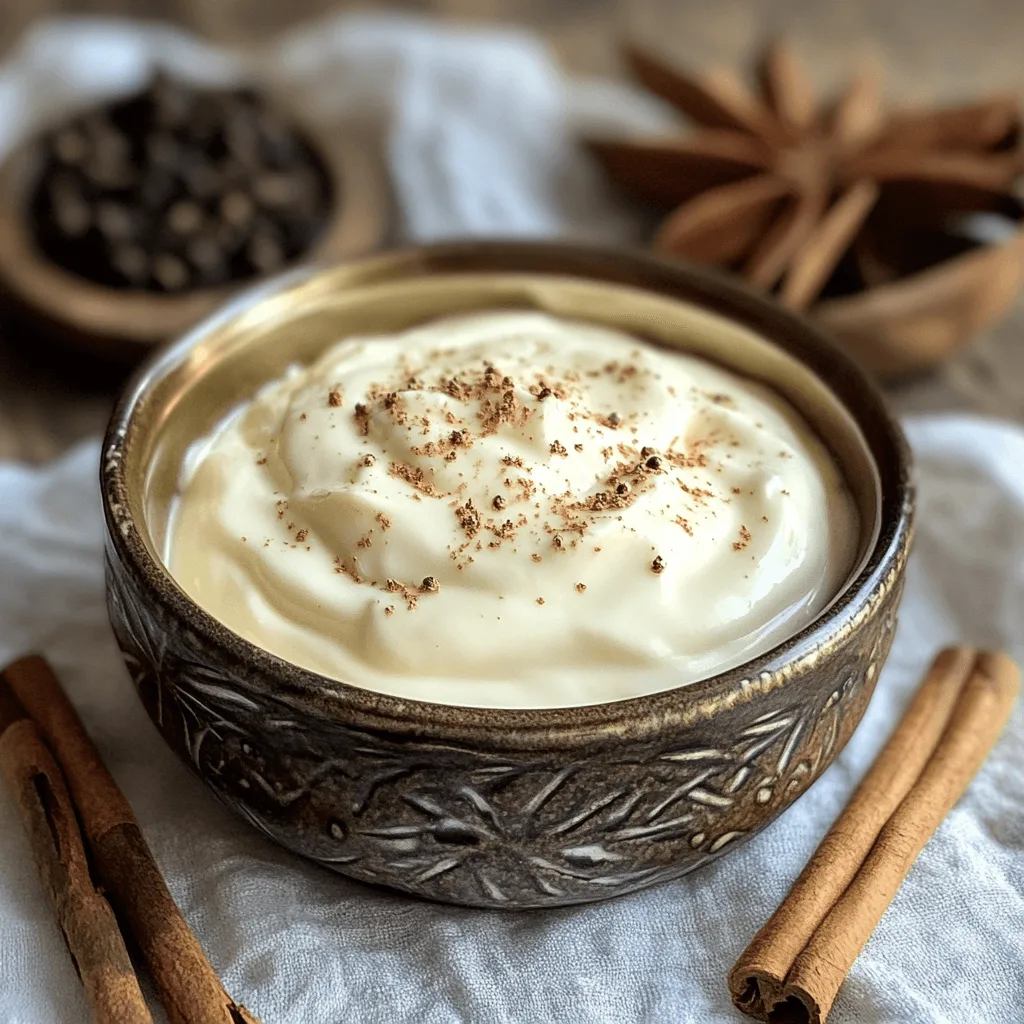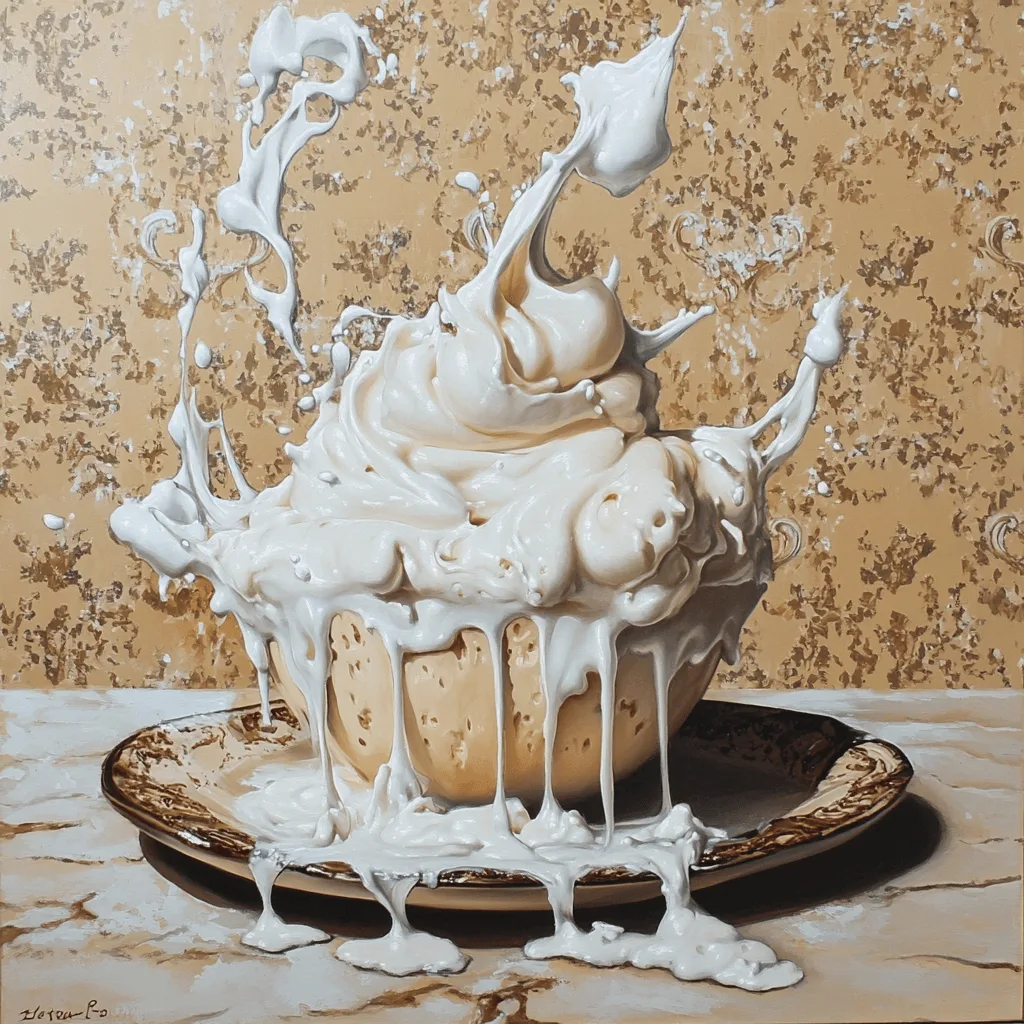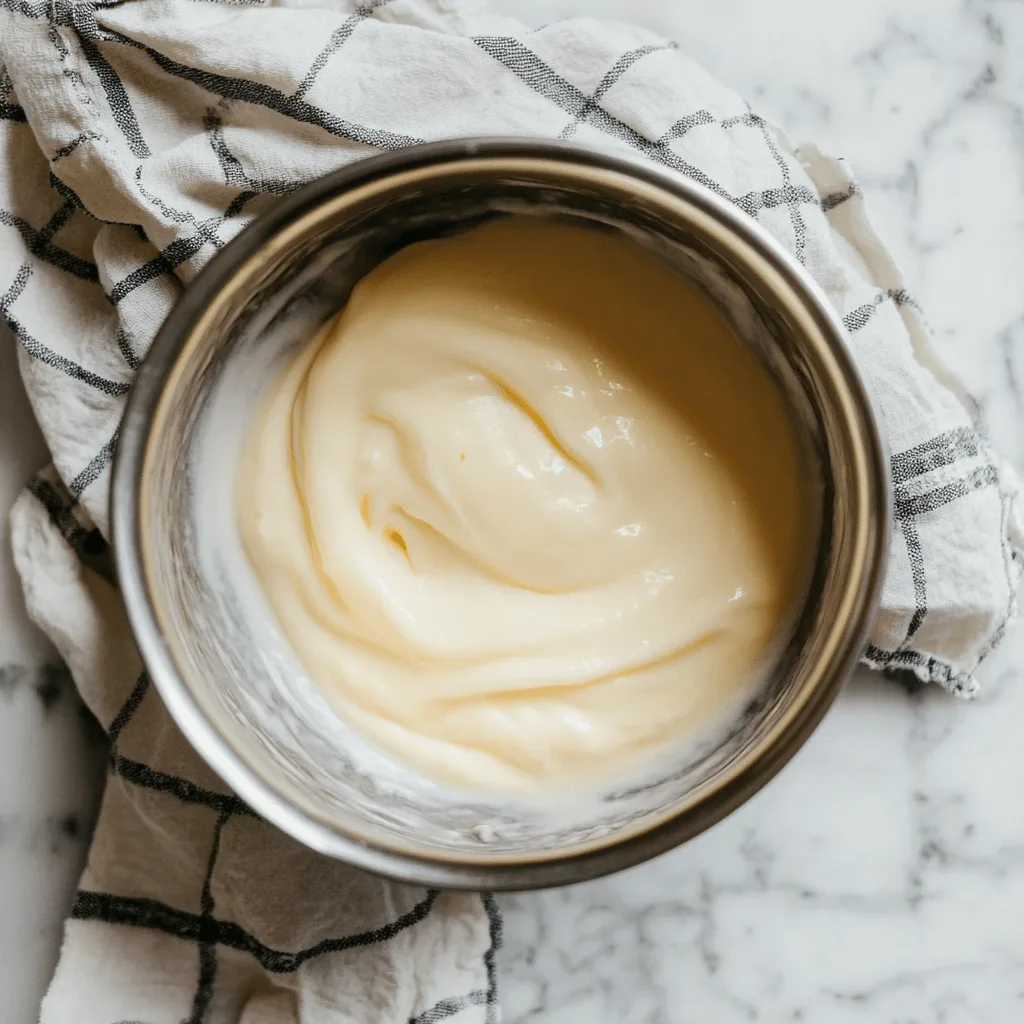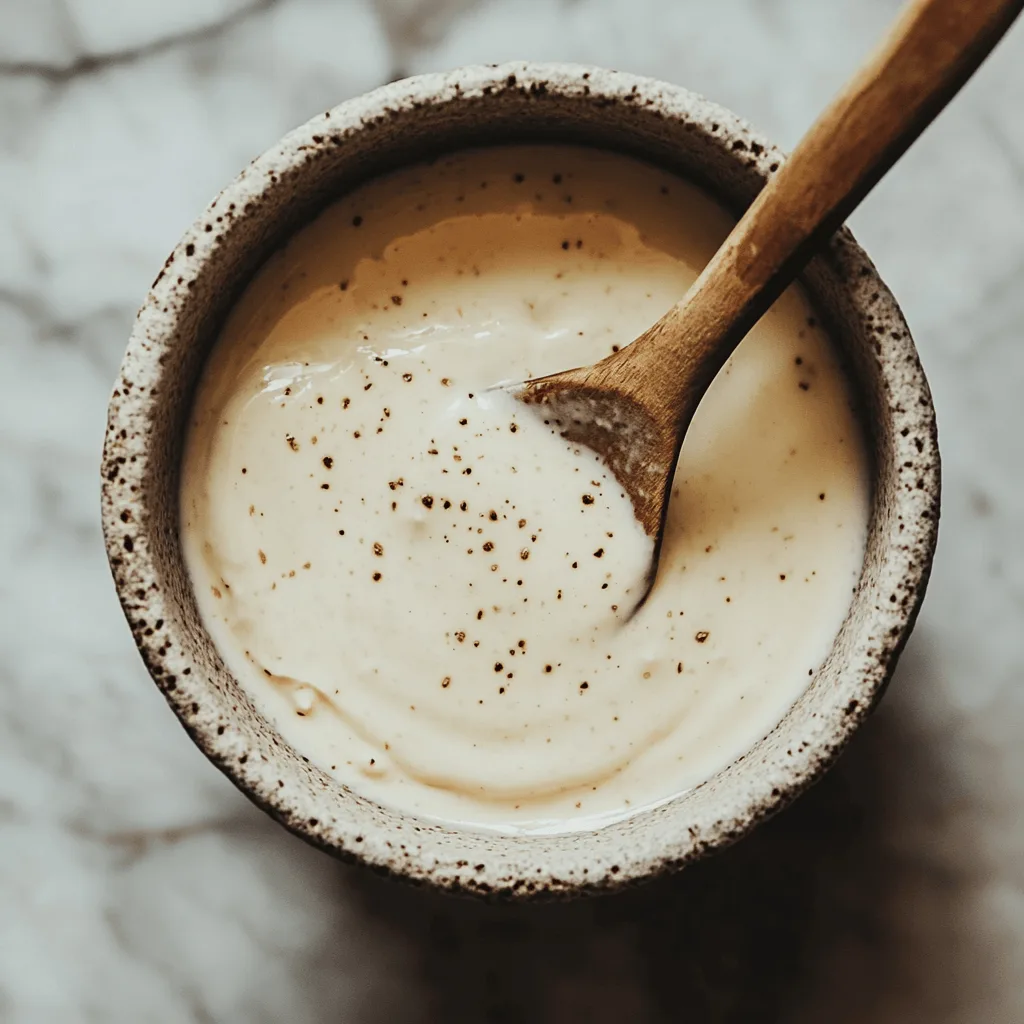Introduction
Heavy cream is a versatile dairy product used in a wide range of recipes, from rich sauces and soups to creamy desserts and frothy coffee drinks. However, sometimes it doesn’t have the thick, luscious consistency you need. Whether your heavy cream is too runny or you’re looking for ways to thicken heavy cream and make it even richer, there are several techniques to achieve the perfect texture.
There are many reasons why heavy cream might not be thick enough. It could be due to a lower fat content, improper whipping techniques, or even temperature-related issues. The good news is that with the right methods and ingredients, you can easily thicken heavy cream at home without compromising its flavor or quality.
In this guide, we’ll explore natural methods, thickening agents, and common mistakes to avoid when working with heavy cream. Whether you’re making a sauce, dessert, or simply want a thicker consistency for your recipes, these expert-approved techniques will help you get the best results.
Let’s dive in and learn how to thicken heavy cream for the perfect consistency! 🚀
Why Does Heavy Cream Become Too Runny?

Common Causes of Thin Heavy Cream
Heavy cream is known for its rich, velvety texture, but sometimes it turns out thinner than expected. If your cream isn’t thickening properly, there are a few key factors that might be affecting its consistency. Understanding these common causes will help you troubleshoot the issue and achieve the perfect creamy texture every time.
1. Low Fat Content: Importance of Fat Percentage in Thickening
The fat content of heavy cream plays a crucial role in its ability to thicken. Typically, heavy cream contains 36% or more milk fat, while other dairy products, such as half-and-half or light cream, have lower fat percentages.
Why Does Fat Matter?
- Stabilization: The higher the fat content, the more stable the cream becomes when whipped or cooked. Fat molecules help trap air and form a thicker structure.
- Emulsification: Heavy cream’s fat content allows it to emulsify (combine smoothly) with other ingredients in sauces, soups, and desserts. Lower-fat dairy products may separate or stay runny.
- Viscosity: A higher fat percentage naturally results in a thicker consistency without needing additional stabilizers.
How to Fix It:
- Always check the label before purchasing heavy cream and ensure it contains at least 36% fat. If you’re using “whipping cream” instead of “heavy cream,” it may have only 30-35% fat, making it less thick.
- If your cream has lower fat content, consider adding butter or a small amount of mascarpone cheese to increase its richness.
2. Over-Whipping or Under-Whipping: How Mixing Speed Affects Thickness
Whipping heavy cream is a popular method for thickening, but getting the technique right is essential. Over-whipping or under-whipping can both result in cream that lacks the desired consistency.
What Happens If You Under-Whip?
- The cream remains liquid and won’t hold peaks.
- Air isn’t properly incorporated, preventing the formation of a stable structure.
- It won’t be thick enough for toppings, fillings, or frostings.
✅ How to Fix It: Use a hand mixer or stand mixer on medium speed, and watch for soft peaks to form before stopping.
What Happens If You Over-Whip?
- The cream becomes too stiff and starts breaking down into butter and buttermilk.
- Instead of a smooth, fluffy texture, it turns grainy and separated.
- It loses its ability to blend into sauces and soups smoothly.
✅ How to Fix It: If you’ve accidentally over-whipped the cream, add a few teaspoons of unwhipped heavy cream and gently fold it in to loosen the texture.
3. Temperature Issues: Why Chilling Heavy Cream Before Use Is Essential
Temperature plays a significant role in how heavy cream thickens. If it’s too warm, the fat won’t hold its structure, leading to a thinner consistency.
Why Chilled Cream Works Better
- Cold heavy cream thickens more easily because the fat molecules remain solid and stable.
- Warm cream struggles to incorporate air when whipped, making it harder to form peaks.
- Heat can cause separation, leading to a curdled or runny texture in sauces and soups.
How to Fix It:
- Refrigerate heavy cream before use, keeping it at 35-40°F (1-4°C) for the best results.
- For whipping, chill your mixing bowl and beaters for at least 10-15 minutes before starting.
- If your cream is too warm, place it in the fridge for a short time before trying to thicken it.
By understanding these common causes of thin heavy cream, you can take the right steps to ensure your cream thickens properly, whether you’re using it for whipped toppings, sauces, or baking recipes. In the next section, we’ll explore natural ways to thicken heavy cream without using additives! 🚀
Natural Ways to Thicken Heavy Cream

Using Refrigeration to Improve Consistency
Refrigeration is one of the most effective natural methods to thicken heavy cream without altering its flavor or adding extra ingredients. Keeping heavy cream cold helps stabilize the fat, making it easier to achieve the perfect thick and creamy texture. Below, we’ll explore why chilling is essential, the best storage temperature, and how long you should refrigerate your cream before use.
How Chilling Helps Heavy Cream Stabilize
Cold temperatures play a crucial role in stabilizing heavy cream by keeping the fat molecules solid and preventing them from breaking down. When heavy cream is too warm, the fat softens and struggles to hold its structure, leading to a thinner, runnier consistency.
By chilling heavy cream:
✅ The fat content remains intact, allowing the cream to thicken naturally.
✅ It whips more efficiently, as cold fat traps air better.
✅ It prevents premature separation, which can occur if the cream is exposed to heat.
This is why professional chefs and bakers always use cold cream when making whipped toppings, thickening sauces, or incorporating cream into desserts.
Best Storage Temperature for Thickening
To ensure your heavy cream stays thick and stable, store it in the refrigerator at the ideal temperature of 35-40°F (1-4°C). This is the perfect range to keep the fat solid while preventing freezing.
Storage Tips for Maintaining Thickness:
- Always store heavy cream in the coldest part of the fridge (not in the door, where temperatures fluctuate).
- Keep it sealed tightly to prevent moisture loss and the absorption of fridge odors.
- If using cream for whipping, chill your mixing bowl and whisk for at least 10-15 minutes before starting.
How Long to Refrigerate Before Use
If your heavy cream has been left out or is slightly warm, it’s essential to refrigerate it before using to help restore its thick consistency.
- For general use: Refrigerate for at least 2-4 hours before thickening.
- For whipping: Chill the cream overnight for the best results.
- For cooking (sauces, soups, etc.): A quick 30-minute chill can help prevent it from breaking when heated.
If heavy cream has been stored properly but still seems too thin, the next step is to whip it or reduce it on the stovetop.
Whipping Heavy Cream for Thicker Texture
Whipping is one of the fastest and easiest ways to thicken heavy cream naturally. The process incorporates air into the cream, increasing its volume and giving it a fluffy, stable structure. However, improper whipping techniques can lead to under-whipped or over-whipped cream, both of which can affect consistency.
The Best Techniques for Whipping Heavy Cream
To successfully thicken heavy cream by whipping, follow these key steps:
1️⃣ Use cold heavy cream (at least 36% fat) and chilled equipment.
2️⃣ Start at a low speed when using a mixer to prevent splattering.
3️⃣ Gradually increase to medium speed to build volume.
4️⃣ Stop whipping once soft peaks form if you need a looser consistency.
5️⃣ Continue whipping to stiff peaks if you need a thicker, more stable texture.
🔹 Soft peaks: Cream holds its shape but is still smooth and slightly droopy (great for topping fruit).
🔹 Stiff peaks: Cream holds its shape firmly and doesn’t collapse (best for frosting and fillings).
What Tools to Use (Hand Mixer, Stand Mixer, Whisk)
Different tools can affect how quickly and evenly your heavy cream thickens.
🌀 Hand Mixer: Ideal for small batches, giving better control over consistency.
⚡ Stand Mixer: Best for large batches, but be cautious as it can over-whip quickly.
🎭 Whisk: A traditional method that requires manual effort but great control over texture.
🛑 Avoid using a blender or food processor, as they tend to over-whip cream too quickly, turning it grainy or even into butter.
When to Stop Whipping to Avoid Butter Formation
Over-whipping is a common mistake that can ruin your cream’s texture. If whipped too much, the fat molecules will begin to separate from the liquid (buttermilk), turning into butter.
Signs you’re over-whipping:
❌ Cream appears grainy or lumpy instead of smooth.
❌ It feels too stiff and loses its silky texture.
❌ Liquid starts separating from the solid fat.
How to Fix It: If you’ve over-whipped your heavy cream slightly, add 1-2 tablespoons of unwhipped cream and gently fold it in. If the separation is too severe, you may need to start over.
Reducing Heavy Cream on the Stovetop
Another effective way to thicken heavy cream is by reducing it over heat. This method is perfect for thickening heavy cream for sauces, soups, or creamy pasta dishes without adding any additional ingredients.
How Simmering Helps Evaporate Excess Liquid
When heavy cream is gently simmered, the water content evaporates, leaving behind a richer, thicker consistency. This process naturally increases the cream’s fat concentration, making it ideal for dishes that require a velvety texture.
- Perfect for: Alfredo sauce, creamy soups, and decadent desserts.
- Avoid boiling: High heat can cause the cream to curdle or scorch, ruining the flavor.
Step-by-Step Guide to Reducing Heavy Cream
Follow these simple steps to reduce heavy cream and achieve a thicker consistency:
1️⃣ Pour the heavy cream into a saucepan over low to medium heat.
2️⃣ Stir continuously to prevent scorching and maintain an even texture.
3️⃣ Allow it to simmer gently (not boil) for 10-15 minutes until it reduces by about ⅓ to ½ of its original volume.
4️⃣ Remove from heat and let it cool—it will thicken further as it cools.
🔹 If you want to speed up the thickening process, whisking lightly while it simmers can help distribute heat evenly.
Best Recipes That Use Reduced Heavy Cream
Reducing heavy cream is a fantastic technique for enhancing flavors and texture in various recipes. Here are some delicious dishes where reduced cream works best:
🍝 Creamy Pasta Sauces – A thicker cream base makes dishes like Alfredo sauce ultra-rich.
🥣 Soups & Chowders – Reducing cream intensifies the flavor of creamy soups without making them too liquidy.
🍮 Desserts & Custards – Many custards and puddings require thickened cream to set properly.
🥘 Gravy & Sauces – Helps create a more luxurious texture in gravies and pan sauces.
Final Thoughts
By using refrigeration, proper whipping techniques, and stovetop reduction, you can easily thicken heavy cream for a variety of uses. Whether you’re making whipped cream for desserts, thickening sauces, or looking for a way to stabilize your cream, these techniques will ensure you get the perfect consistency every time.
Ingredients That Help Thicken Heavy Cream
Using Cornstarch or Flour as a Thickener
Cornstarch and flour are two of the most accessible and commonly used thickeners in cooking. They work by absorbing liquid and forming a gel-like consistency, which helps increase the viscosity of heavy cream without altering its flavor significantly. These thickeners are particularly useful in savory dishes and creamy sauces where a smooth, stable texture is needed.
How to Mix Cornstarch or Flour with Cream
Cornstarch and flour should never be added directly to heavy cream, as they can form lumps. Instead, they need to be dissolved in a small amount of liquid before incorporating them into the cream.
Cornstarch Slurry Method
✅ Cornstarch works best for dairy-based sauces and gravies because it thickens without adding a noticeable taste.
✅ It creates a smooth and glossy finish, making it ideal for creamy dishes.
To use cornstarch as a thickener:
- Dissolve 1 tablespoon of cornstarch in 2 tablespoons of cold water (or milk) to create a slurry.
- Heat the heavy cream over low-medium heat in a saucepan.
- Slowly add the cornstarch slurry while stirring continuously.
- Continue stirring and simmer for 2-3 minutes until the cream thickens.
Flour Roux Method
✅ Flour is a good alternative if cornstarch isn’t available, but it requires cooking to remove the raw flour taste.
✅ A flour-based thickening method results in a heavier, more opaque consistency compared to cornstarch.
To use flour as a thickener:
- Melt 1 tablespoon of butter in a saucepan over low heat.
- Stir in 1 tablespoon of all-purpose flour and cook for 1-2 minutes, whisking constantly (this forms a roux).
- Slowly pour in the heavy cream while whisking continuously.
- Simmer for 3-5 minutes, stirring frequently, until the mixture thickens.
Best Dishes That Work Well with This Method
Cornstarch and flour-thickened cream are commonly used in savory dishes rather than desserts. Here are some of the best recipes that benefit from this technique:
🍝 Creamy Pasta Sauces – Alfredo, carbonara, and white wine sauce.
🥣 Soups & Chowders – Clam chowder, creamy tomato soup, and bisques.
🥘 Gravies & Pan Sauces – Thickening pan drippings for rich, smooth sauces.
🥧 Savory Pies & Casseroles – Chicken pot pie filling and baked mac and cheese sauce.
For desserts like puddings and custards, cornstarch is a better choice than flour, as it creates a silkier finish.
Gelatin and Agar-Agar for Extra Stability
If you need a long-lasting, firm texture, gelatin and agar-agar are excellent choices. These ingredients work by creating a gel structure that stabilizes the heavy cream, making them ideal for mousse, whipped toppings, and desserts that require a firm consistency.
How Gelatin Helps Stabilize Heavy Cream
✅ Gelatin is a natural protein-based stabilizer derived from animal collagen.
✅ It prevents whipped cream from deflating and helps create a light but stable texture.
✅ Used in small amounts, gelatin won’t change the flavor of your cream.
The Right Way to Dissolve and Mix Gelatin into Cream
To use gelatin as a thickener:
- Sprinkle 1 teaspoon of unflavored gelatin over 2 tablespoons of cold water in a small bowl.
- Let it bloom (absorb the water) for 5 minutes.
- Gently heat the bloomed gelatin in the microwave for 10-15 seconds until fully dissolved.
- While whipping the heavy cream, slowly pour in the warm gelatin mixture, mixing continuously.
- Continue whipping until soft or stiff peaks form.
💡 Pro Tip: This method is perfect for stabilizing whipped cream for frosting cakes or topping pies, as it prevents the cream from losing its shape over time.
Vegan Alternatives Like Agar-Agar
Agar-agar is a plant-based alternative to gelatin, derived from seaweed. It works similarly by creating a firm, stable structure in heavy cream.
✅ Stronger than gelatin – only a small amount is needed.
✅ Heat-activated – must be dissolved in boiling liquid before adding to cream.
✅ Perfect for vegan recipes like dairy-free mousses, puddings, and sauces.
To use agar-agar:
- Dissolve ½ teaspoon of agar-agar powder in 2 tablespoons of hot water.
- Boil for 1-2 minutes to fully activate.
- Let it cool slightly, then slowly mix it into whipped or simmering heavy cream.
Xanthan Gum and Other Modern Thickeners
For instant thickening with minimal cooking, modern food thickeners like xanthan gum can be highly effective. These stabilizers are often used in commercial food production and require very small amounts to thicken heavy cream.
What Is Xanthan Gum, and How Does It Work?
Xanthan gum is a plant-based thickener made from fermenting simple sugars. It creates a viscous texture by binding water molecules together, making it ideal for cold applications like whipped cream, salad dressings, and no-cook sauces.
✅ Works instantly – No cooking required.
✅ Only a small amount needed – Thickens heavy cream at concentrations as low as 0.1% (¼ teaspoon per cup of cream).
✅ Provides a smooth texture – No lumps, no grittiness.
Using a Tiny Amount to Avoid Over-Thickening
Because xanthan gum is extremely potent, adding too much can make heavy cream too thick and slimy. To use it properly:
- Sprinkle ¼ teaspoon of xanthan gum over 1 cup of heavy cream.
- Whisk or blend immediately to disperse evenly.
- Allow it to sit for 1-2 minutes to fully thicken.
- If a thicker texture is needed, add ⅛ teaspoon more at a time.
💡 Pro Tip: If using xanthan gum in whipped cream, add it before whipping for better aeration and structure.
Pros and Cons of Using Modern Food Thickeners
✔ Pros:
- Instant thickening, no cooking needed.
- Works at low temperatures, perfect for cold dishes.
- Gluten-free and keto-friendly.
❌ Cons:
- Can create an overly thick or slimy texture if too much is used.
- Doesn’t provide the same rich taste as fat-based thickeners like butter.
- Some people prefer natural thickening methods over food additives.
Final Thoughts
Each thickening method—cornstarch, flour, gelatin, agar-agar, and xanthan gum—has its own benefits and best use cases:
- For sauces and gravies: Cornstarch or flour works best.
- For whipped cream stabilization: Gelatin is ideal.
- For vegan alternatives: Agar-agar is a great choice.
- For instant thickening: Xanthan gum is the most effective.
By choosing the right method, you can achieve the perfect heavy cream consistency for any recipe!
Fixing Common Issues When Thickening Heavy Cream

Thickening heavy cream can sometimes lead to unexpected problems. It might become too thick, grainy, or even separate due to over-whipping or improper thickening techniques. If you’ve encountered any of these issues, don’t worry—there are ways to fix them! Below, we’ll cover how to rescue over-thickened cream, thin it out when necessary, and restore a smooth, creamy texture when it turns grainy or splits.
How to Fix Over-Thickened Heavy Cream
If your heavy cream has become too thick, whether from over-whipping, excessive heat reduction, or using too much thickening agent, the key is to reintroduce liquid and gently mix it back to a desirable consistency.
What to Do If the Cream Becomes Too Stiff
Over-whipping heavy cream or using too much of a thickening agent (like gelatin, cornstarch, or xanthan gum) can result in a texture that is too stiff and difficult to work with.
Quick Fix:
✅ Gradually add a liquid (unwhipped heavy cream or milk) while gently folding or whisking.
✅ If over-whipped: Stop mixing immediately and fold in fresh cream by hand to loosen the texture.
✅ Avoid high-speed mixing at this stage, as it can cause further separation.
💡 Pro Tip: If your cream is over-whipped but not yet separated into butter, adding 1-2 tablespoons of fresh heavy cream and stirring gently can help loosen it without ruining the structure.
How to Thin Out Heavy Cream with Milk
If you’ve reduced heavy cream on the stovetop too much, or if you accidentally made it too thick with a thickener, you may need to dilute it slightly.
Step-by-Step Method:
1️⃣ Take cold milk or fresh unwhipped heavy cream (depending on the dish).
2️⃣ Slowly add 1 tablespoon at a time while stirring or gently whisking.
3️⃣ Continue adding liquid until the desired consistency is reached.
4️⃣ If needed, warm it slightly over low heat for better incorporation.
💡 Best Liquids to Use for Thinning Heavy Cream:
- Milk (whole or 2%) – Works well for general thinning.
- Half-and-half – A good option for maintaining creaminess while making it lighter.
- Stock or broth – Great for thinning cream-based soups or sauces without diluting flavor.
🚫 Avoid using water, as it can make the cream lose its richness and body.
Fixing Grainy or Split Textures
Heavy cream can turn grainy, curdled, or separated if it’s:
❌ Over-whipped to the point where fat separates from liquid.
❌ Overheated, causing the dairy proteins to curdle.
❌ Mixed with acidic ingredients incorrectly (e.g., lemon juice, vinegar).
How to Restore Grainy Whipped Cream
If your whipped heavy cream turns grainy, it means it’s been over-whipped past the soft peak stage.
✔ Fix:
- Add 1-2 tablespoons of fresh heavy cream and gently fold it in using a spatula.
- Whisk slowly by hand instead of using a mixer.
- If it’s too stiff to rescue, let it sit at room temperature for a few minutes before trying again.
💡 Prevention Tip: Always whip heavy cream on medium speed instead of high speed to avoid graininess.
How to Fix Curdled or Split Heavy Cream
Curdling happens when the fat separates from the liquid due to:
- Overheating (especially in sauces or soups).
- Mixing with acidic ingredients too quickly.
- Adding too much cornstarch, gelatin, or xanthan gum at once.
✔ Fix for Curdled Cream in Sauces & Soups:
1️⃣ Remove the sauce or soup from direct heat.
2️⃣ Slowly whisk in a little bit of warm heavy cream to bring it back together.
3️⃣ If it remains separated, blend it with an immersion blender to emulsify the fat and liquid again.
✔ Fix for Curdled Whipped Cream:
1️⃣ If it’s just starting to separate, add a small amount of unwhipped cream and mix gently.
2️⃣ If it’s fully split, you may have made butter—at this point, it can’t be turned back into cream!
Final Thoughts
Thickening heavy cream shouldn’t be stressful—and even if things go wrong, there’s almost always a way to fix it! Here’s a quick summary:
🔹 Too thick? Add milk or fresh cream and stir gently.
🔹 Too stiff from whipping? Fold in unwhipped cream to loosen it.
🔹 Grainy? Gently mix in extra cream to smooth it out.
🔹 Curdled in a sauce? Whisk in warm cream or use an immersion blender.
🔹 Fully separated? It might have turned into butter, which is a different (but still useful!) result.
With these fixes, you can easily troubleshoot thickened heavy cream and get the perfect consistency every time! 😊
Conclusion
Thickening heavy cream is an essential skill that can elevate the texture and richness of your dishes, whether you’re making whipped cream, creamy sauces, or decadent desserts. By using natural methods like chilling and whipping, or thickening agents such as cornstarch, gelatin, or xanthan gum, you can achieve the perfect consistency for any recipe.
However, it’s important to know how to fix common issues like over-thickening, graininess, or curdling. If your cream becomes too stiff, simply add a bit of unwhipped cream to loosen it. If it turns grainy or starts to separate, gentle whisking or blending can help restore its smooth texture.
The key takeaway? Understanding how different thickening techniques work allows you to adjust and perfect your cream’s consistency with confidence. Whether you’re making a silky pasta sauce, a luscious dessert topping, or a rich soup base, these tips will ensure you get the best results every time.
Now it’s your turn! Which thickening method do you prefer? Have you ever had trouble with heavy cream? Share your thoughts, experiences, or favorite recipes in the comments below! 😊👇

